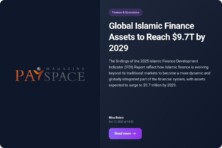Citigroup reported that by the end of the second quarter of this year in the United States, the revenue received by this financial institution as a result of the provision of personal banking services increased by 11% compared to the indicator for the same period in 2022 and amounted to $4.6 billion.

Experts, analyzing the current indicators, say that consumers take out more loans and the lender benefits at this time. This is an obvious pattern for businesses in the banking sector.
The bank’s report contains information that the revenue growth is the result not only of an increase in demand for lending but also due to other factors. The positive dynamic is partly a consequence of rising interest rates. Also, the indicator for the second quarter was affected by an increase in the balance of funds on customer cards. The benefits outweighed the 78% increase in consumer credit write-offs.
Jane Fraser, CEO of Citigroup, says that a diversified business strategy followed by a financial institution has advantages in a difficult macroeconomic situation. She also reported that the volume of the bank’s card issuance activity shows double-digit growth, which, according to her, is the result of active interaction.
According to the results of the second quarter, the lender’s credit expenses showed an increase, which was recorded at the level of 43% and amounted to $1.8 billion. This indicator is due to the write-off of funds.
The lender’s total expenses for the last quarter increased by 9%, reaching $13.6 billion. This was facilitated by the severance costs associated with the dismissal of 1,600 employees, including traders and investment bankers.
Also, the bank’s report on financial results for the last quarter contains information that the revenue of the Treasury and trading solutions divisions increased by 15%, to $3.5 billion.
Interest income and corporate cash processing fees contributed to the improvement of the lender’s performance. The balances on credit cards of a financial institution in the United States amount to $149 billion.
In the second quarter, Citigroup faced the problem of a downturn in investment banking, which became a trend that swept the entire industry. Revenue from such operations amounted to $612 million, a decrease of 24%.
As we have reported earlier, Citigroup Reportedly Reviews Deal With Metaco to Develop Digital Asset Custody.









